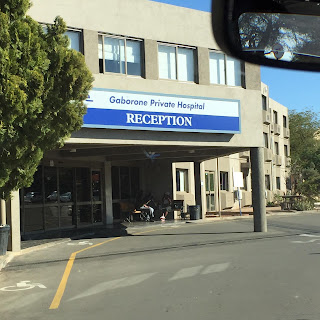Standing in front of the 10 medical students starting their 5-week anesthesia rotation, I realized that there is one primary objective I need to achieve: teaching resuscitation skills. This is their last clinical rotation; in 5 weeks, they will be disbursed as general practitioners to the district medical centers where they may be the one doctor available to both hold the scalpel and provide the anesthesia care for a C-section. “ABC’s and vitals” is the mantra I keep repeating to them. Ensure that the trauma patient who just comes into the emergency room has a patent Airway, is Breathing, and has Circulation, then check their vital signs to gage whether their heart or lungs may imminently collapse before tending to the specific injuries. These are the skills in recognizing respiratory or hemodynamic instability and the expertise in resuscitation that we cultivate in anesthesiology and are transferable to keeping a patient alive in any setting, not just the operating theater. Teaching medical students in Rwanda, I realize that these are the most important lessons to get across, not the more self-serving desire to show them “how cool anesthesiology is” and to entice them to follow my career choice.
The reality is, likely none of these students
will choose anesthesiology as a specialty, at least not as their first, second,
or even third choice. The popularity of anesthesiology as a career choice in
Rwanda is similar to how it was like in the U.S. twenty years ago. High patient
mortality leading to high stress, low pay, over-burdensome clinical duties due
to lack of personnel, and limited respect are some of the top deterrents medical
students listed on a survey I helped conduct this month on choice of specialty.
 This perspective forms part of the context for
designing lessons and case scenarios. The other key component is tailoring to
their knowledge base. Speaking with anesthesiologists from the U.S. who have
been teaching the medical students for almost a year, I learned that the
medical students have received only very rudimentary lessons about the complex
physiology of the respiratory system. Thus, we started our first lesson by
explaining the fundamentals of why oxygen is crucial for survival and how oxygen
enters the body. When a patient cannot take in sufficient oxygen (either due to
anesthesia or medical condition), anesthesiologists step in as the “Oxygen-Providing
Service.” This paring down to the core of what anesthesiologists provide removes
the distractions arising from the technical aspects of anesthesiology, and focuses
their attention on assessing a patient’s clinical status and intervening
expeditiously.
This perspective forms part of the context for
designing lessons and case scenarios. The other key component is tailoring to
their knowledge base. Speaking with anesthesiologists from the U.S. who have
been teaching the medical students for almost a year, I learned that the
medical students have received only very rudimentary lessons about the complex
physiology of the respiratory system. Thus, we started our first lesson by
explaining the fundamentals of why oxygen is crucial for survival and how oxygen
enters the body. When a patient cannot take in sufficient oxygen (either due to
anesthesia or medical condition), anesthesiologists step in as the “Oxygen-Providing
Service.” This paring down to the core of what anesthesiologists provide removes
the distractions arising from the technical aspects of anesthesiology, and focuses
their attention on assessing a patient’s clinical status and intervening
expeditiously.
Thus, the case scenario that I designed is
set in the emergency room rather than the operating theater. It emphasizes
vigilance, reassessment of a patient’s condition, stabilization of a patient’s
cardiopulmonary status, refinement of their differential diagnoses, and anticipating
next steps –skills that are important in any clinical setting. Faced with the
challenge of managing an unstable patient, the students were very engaged,
volunteered answers, and asked questions. In an education system where students
were expected to simply absorb information and not encouraged to speak in
class, this active involvement from the students was very encouraging.
The final class took place in the SimLab,
where the students were able to put the theory and skills into practice by
working as a team to resuscitate and ventilate the mannequins. Though most if not
all of them will not become anesthesiologists, as practitioners in a country
where there is 0.6 physician for every 10,000 people, they will likely encounter
situations when they would be called upon to oxygenate and stabilize a patient.
I hope they will remember the ABC’s from the Oxygen-Providing Service.




